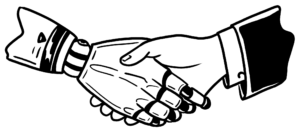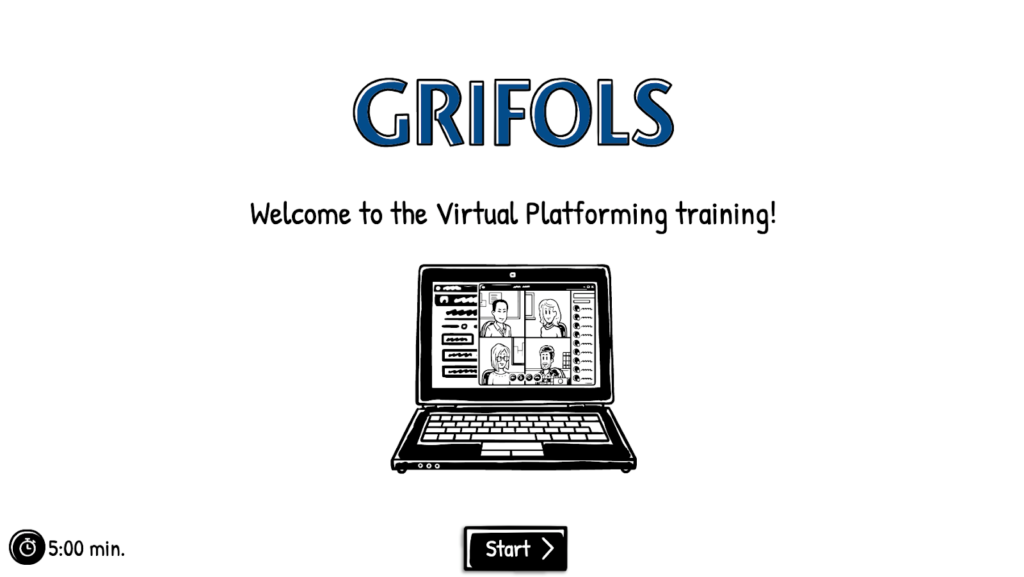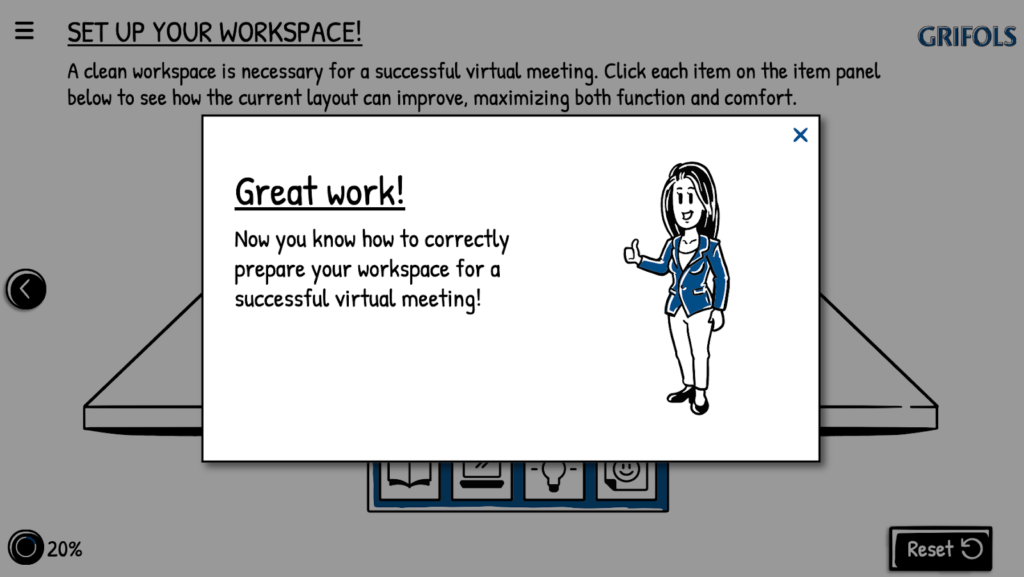How Grifols Populated a Custom LMS Using simpleshow video maker
 Learning management systems (LMS) are not a new construct – they’ve been the foundation of successful companies around the globe for almost 100 years. While the method of delivery has changed since its first inception in 1924, the LMS still serves very significant purposes in a business: training employees/users and reducing a company’s costs of training. While there are endless off-the-shelf LMS programs available in today’s marketplace, there is something undeniably valuable in thinking outside of the box and creating an LMS that is truly custom to your brand. We asked simpleshow video maker superuser Gregg Rogers, of Grifols, to explain “the how & why” he built training videos and learning resources on his own using our proprietary SaaS tool.
Learning management systems (LMS) are not a new construct – they’ve been the foundation of successful companies around the globe for almost 100 years. While the method of delivery has changed since its first inception in 1924, the LMS still serves very significant purposes in a business: training employees/users and reducing a company’s costs of training. While there are endless off-the-shelf LMS programs available in today’s marketplace, there is something undeniably valuable in thinking outside of the box and creating an LMS that is truly custom to your brand. We asked simpleshow video maker superuser Gregg Rogers, of Grifols, to explain “the how & why” he built training videos and learning resources on his own using our proprietary SaaS tool.
Prior to using simpleshow video maker, how many years of experience did you have making videos?
Not much. We made a few videos previously, and they weren’t very good. We actually tried another video tool that didn’t have a professional look and feel. The graphics weren’t a match, and the designs were out of sync. These discrepancies on scale, style, and quality produced a messy effect, it never was quite right. Then we found out about you!
You’ve used our Interactive Training modules for a few projects, such as your Sales Philosophy and Best Practices for Virtual Platforming. What attracted you to use the simpleshow video maker?
We had a custom video produced two years ago to describe our sales engagement philosophy. We explained evergreen topics like the customer profiles, how to represent yourself on behalf of Grifols, and how to use our resources to expand your knowledge and drive sales. Then we realized that we could create our own videos using a DIY version of the same tool and expand our LMS with the necessary materials in real time, which is quite powerful in the corporate learning world.
How has the Grifols team adopted using the video maker?

We’ve trained our entire Learning & Development team, as well as our Talent and Organizational Development trainers. We have schedules to create content and training, and product materials (new hire classes require materials), but we are easily able to update existing materials. For workshops, we try to be creative and we want to bring new assets when possible. I try to always create my own materials for leadership and training sessions that I lead.
Also, we want it to be accessible and available for our team at any time. We are able to store all of our training videos and resources within our CMS ecosystem , meaning that every employee has access to videos and modules when they need to refer back to them for a refresher. We are also able to set up notifications when new training materials are loaded and assigned to team members as mandatory viewing. It’s great because it keeps reminding users until they complete it.
What do you like about video training versus traditional methods?
I guess it was sort of an epiphany really. Let me explain. Years ago, we wrote a Powerpoint on a subject (25 slides!) and I knew people weren’t going to go in, review it, and see the entire thing. At this point, all of our training was delivered that way – but I realized they weren’t going to take it seriously and pay attention; they think they know all the information already! With video, you just have to sit back, watch, and listen. And if you tune out, you can play it again. Animation gives it levity and takes away the bland appearance of otherwise serious material. We wanted it to also fit into people’s lives with convenience: Could they complete the training while sitting in an airport gate, or in transit, or just listen to it? Would it be engaging and accessible? Our check all the boxes.
What interested you in using the simpleshow video maker, rather than simply purchasing off the shelf content?
It’s interesting to see how this world develops, a lot of organizations don’t have a custom learning environment and are given factory materials to distribute and check off and move off to the next thing. We wanted, and still want, content that is tailored to our universe. Off the shelf information is valuable and has its benefits, but we wanted our users to have a relatability to the material. Branding it and using our voice helps us to accomplish that. When we tailor it, we make it specific to the reality of our universe – the people delivering the content and the people viewing the content care about what’s happening in our company’s universe.
How do you measure video success?
A lot of our content has to accomplish multiple things – such as platforming skills, selling skills, and using your tools within platforming, and virtually manage/coach a team in a virtual environment. If a training is able to communicate these ideas, that’s half the battle. Next, we look at a couple of things – survey participants, collect feedback, our end goal or desired behavioral outcome, departmental check ins, tracking use within the LMS, and how all of these things are woven together.

